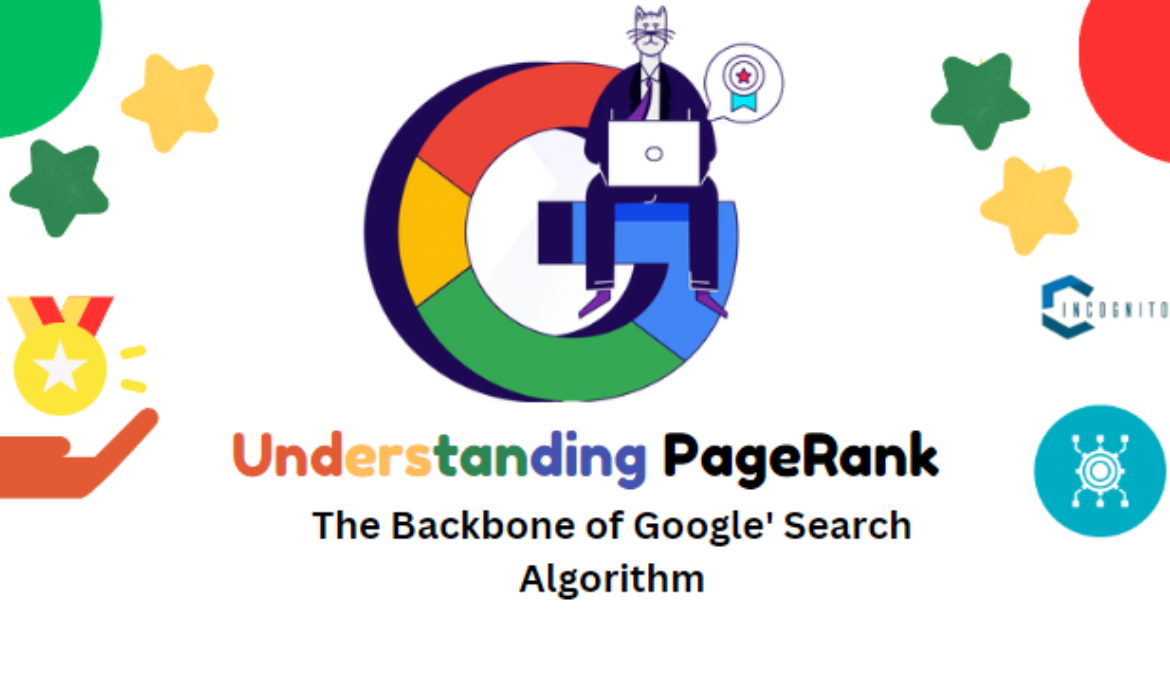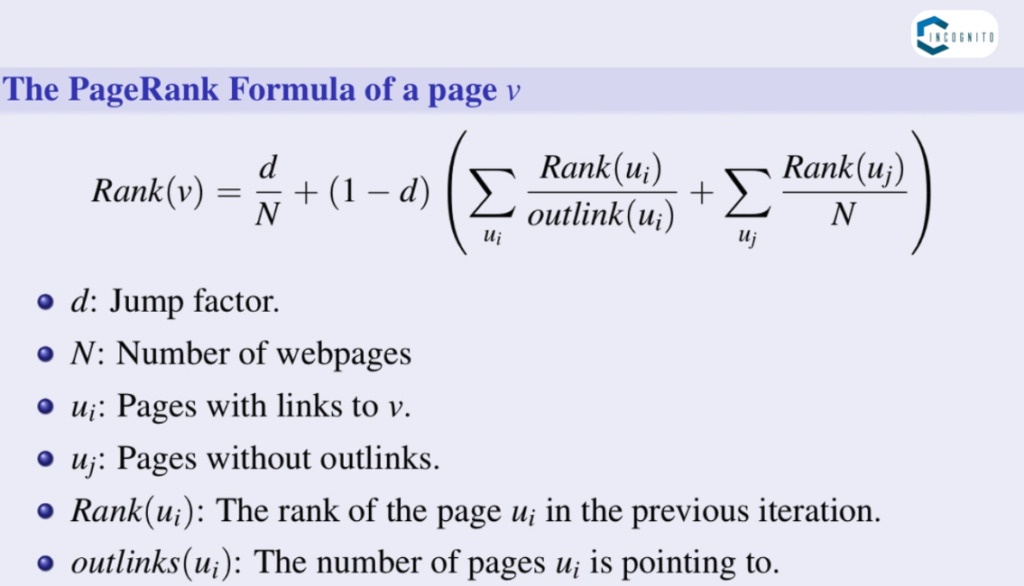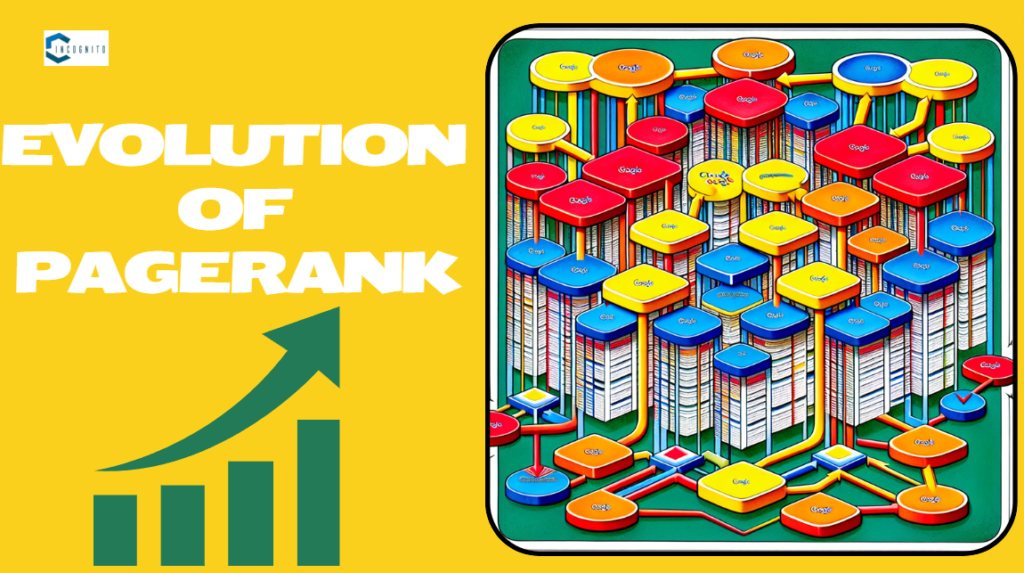
Have you ever wondered how Google chooses which websites to show first after you search for something? The enchantment behind this process is called Page Rank, an intelligent system that helps websites to be ranked in search engine results pages (SERPs) to decide the foremost imperative and relevant web pages.
Created by Google’s founders, Larry Page and Sergey Brin, in 1996, Page Rank was an innovative improvement that changed how search engines work. Let’s dive into what Pagerank is, History of pagerank ,how it works, and why it’s so imperative for anyone interested about websites and online visibility.
What is Page Rank (PR) ?
Page Rank is an algorithm used by Google Search to rank web pages in their search engine results. It is found in 1996 but a couple years later, in 1998,PageRank was released and became the backbone behind Google search results. Named after Larry Page, the algorithm works by counting the number and quality of links to a page to determine a rough estimate of the website’s importance. The underlying assumption is that more important websites are likely to receive more links from other websites. Page Rank helps Google decide which websites are more trustworthy and should be shown higher in search results.
History of PageRank
RankDex, the first search engine with page-ranking and site-scoring algorithms, was launched in 1996. Larry Page and Sergey Brin developed PageRank at standard university in 1996 as part of a research project about a new kind of search engine. An interview with Hector Garcia Molina, Stanford Computer Science professor and advisor to Serge provides background into the development of the page-rank algorithm.
September 1, 1998 Larry Page and Sergey Brin file the first PageRank licence and September 4, Google was incorporated .On December 11, 2000 Google launched the Google Toolbar then 2004 Google file the reasonable surfer patent .After almost 15 years, Google stopped updating the Google Toolbar. (The last confirmed update was in December 2013). The company retired it completely on 8 March 2016.

PageRank Formula (Source: GitHub)
How PageRank Works
PageRank operates on a model of the web as a vast network of documents connected by hyperlinks. Here’s a simplified explanation of the process:
- Link Analysis: Page Rank evaluates the link structure of the web. Each link to a page is seen as a vote of confidence, with some votes carrying more weight than others.
- Voting Power: Not all votes are raised to an interface from a highly definitive location (e.g., a well-regarded news outlet) is more important than one from a lesser-known blog.
- Distribution of Rank: Each page rank is distributed among the pages it joins to. On the off chance that a high-ranking page joins to another page, it passes on a few of its rank, in this manner boosting the connected page’s positioning.
- Damping Factor: The algorithm includes a damping factor, regularly set at 0.85, which accounts for the probability that a user will proceed clicking on links versus starting a new search.

The Significance of Page Rank in SEO
The Significance of PageRank in SEO
Page Rank fundamentally changed the landscape of SEO by emphasizing the quality of backlinks over mere keyword stuffing. Key implications include:
- Quality Over Quantity: Websites with a smaller number of high-quality backlinks can outrank those with various low-quality links.
- Link Building Techniques: SEO procedures evolved to focus on securing backlinks from reputable and important sites.
- Content Relevance: High-quality, valuable content is more likely to attract high-quality backlinks.

Evolution of PageRank
Evolution of Page Rank
While Page Rank was groundbreaking, it has undergone significant changes and improvements over the years:
Algorithm Updates: Google has continuously updated its algorithms to combat spam and progress the significance of search results. Updates like Penguin focused on manipulative link-building practices.
Integration with Other Factors: Modern SEO takes into account various factors past Page Rank, counting content quality, mobile-friendliness, and user experience.
Toolbar Removal: In 2016, Google removed the public Page Rank scores from its toolbar, signaling a move towards a more complex and less straightforward ranking system.
The Future of Page Rank
Although Page Rank itself is no longer publicly visible, the principles behind it remain integral to Google’s ranking algorithm. The future of PageRank involves:
- Advanced Machine Learning: Joining machine learning to get its user expectation and content significance.
- Focus on User Experience: Continued accentuation on user experience measurements such as page load speed, mobile usability, and location design.
- Content Realness: Increasing importance of content realness and authoritativeness, especially within the age of misinformation.
Conclusion
Page Rank remains an essential concept in understanding Google’s approach to ranking web pages. Its emphasis on link quality revolutionized SEO and continues to impact present day practices. Whereas the specifics of the calculation have advanced, the center idea that high-quality, authoritative content earns the leading visibility perseveres. As Google’s algorithms develop progressively modern, the standards of Page Rank will likely proceed to support the interest of better, more significant search results.
.





